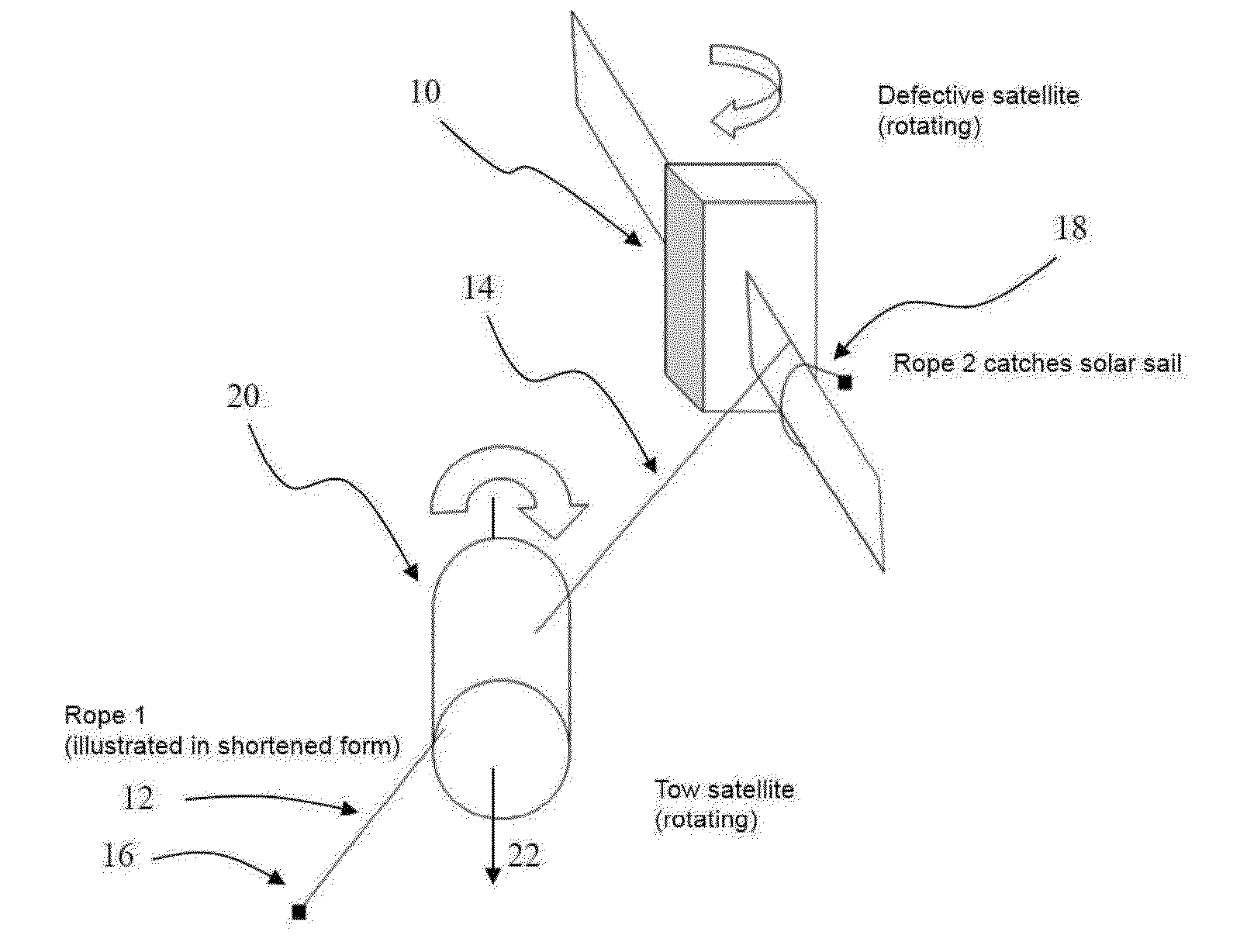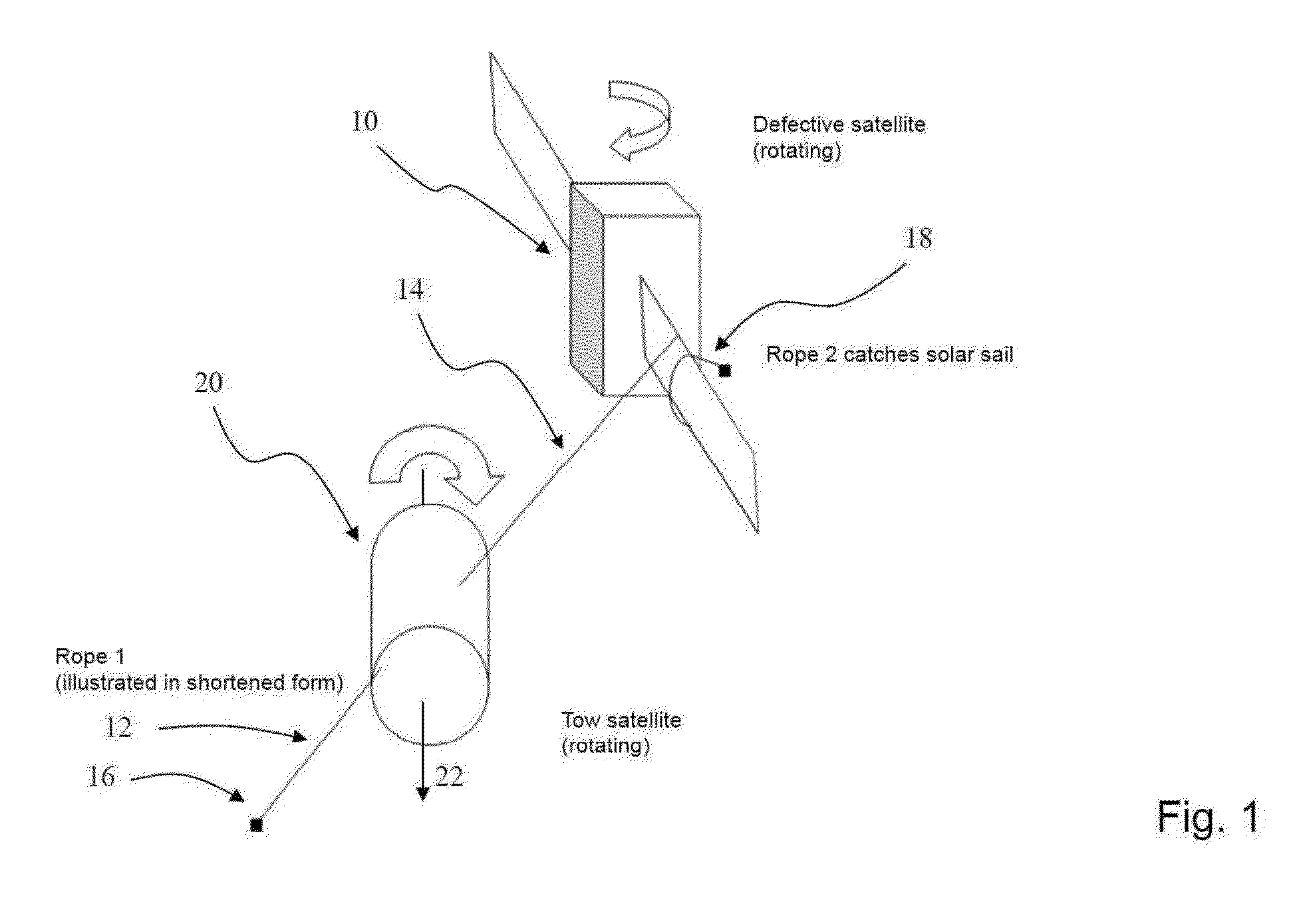Device for Trapping Space Debris
a technology for capturing and storing space debris, which is applied in the direction of meteorite protection, transportation and packaging, and cosmonautic vehicles. it can solve the problems of generating causing considerable damage, and causing a lot of space debris or junk. it achieves the friction necessary for tying space debris and reduces the flexural stiffness
- Summary
- Abstract
- Description
- Claims
- Application Information
AI Technical Summary
Benefits of technology
Problems solved by technology
Method used
Image
Examples
Embodiment Construction
[0020]In the following description, identical, functionally identical and functionally related elements can be designated with the same reference numbers. Absolute values are given only exemplary in the following and are not to be understood as limiting the invention.
[0021]FIG. 1 schematically illustrates how a defective and rotating satellite 10 having solar sails is trapped so it can be towed by a tow satellite 20 according to the invention. For this purpose, the tow satellite 20 approaches the defective satellite only as close as necessary so that there is no danger of a collision, for example with the solar sails, but close enough that the defective satellite 10 is within the trapping range. This approaching maneuver is controlled from a control center from the earth or from a space vehicle such as a space station.
[0022]As soon as the tow satellite 20 is navigated into a trapping position, trapping devices, for example in the form of rope pulleys, attached on two opposite sides ...
PUM
 Login to View More
Login to View More Abstract
Description
Claims
Application Information
 Login to View More
Login to View More - R&D
- Intellectual Property
- Life Sciences
- Materials
- Tech Scout
- Unparalleled Data Quality
- Higher Quality Content
- 60% Fewer Hallucinations
Browse by: Latest US Patents, China's latest patents, Technical Efficacy Thesaurus, Application Domain, Technology Topic, Popular Technical Reports.
© 2025 PatSnap. All rights reserved.Legal|Privacy policy|Modern Slavery Act Transparency Statement|Sitemap|About US| Contact US: help@patsnap.com


